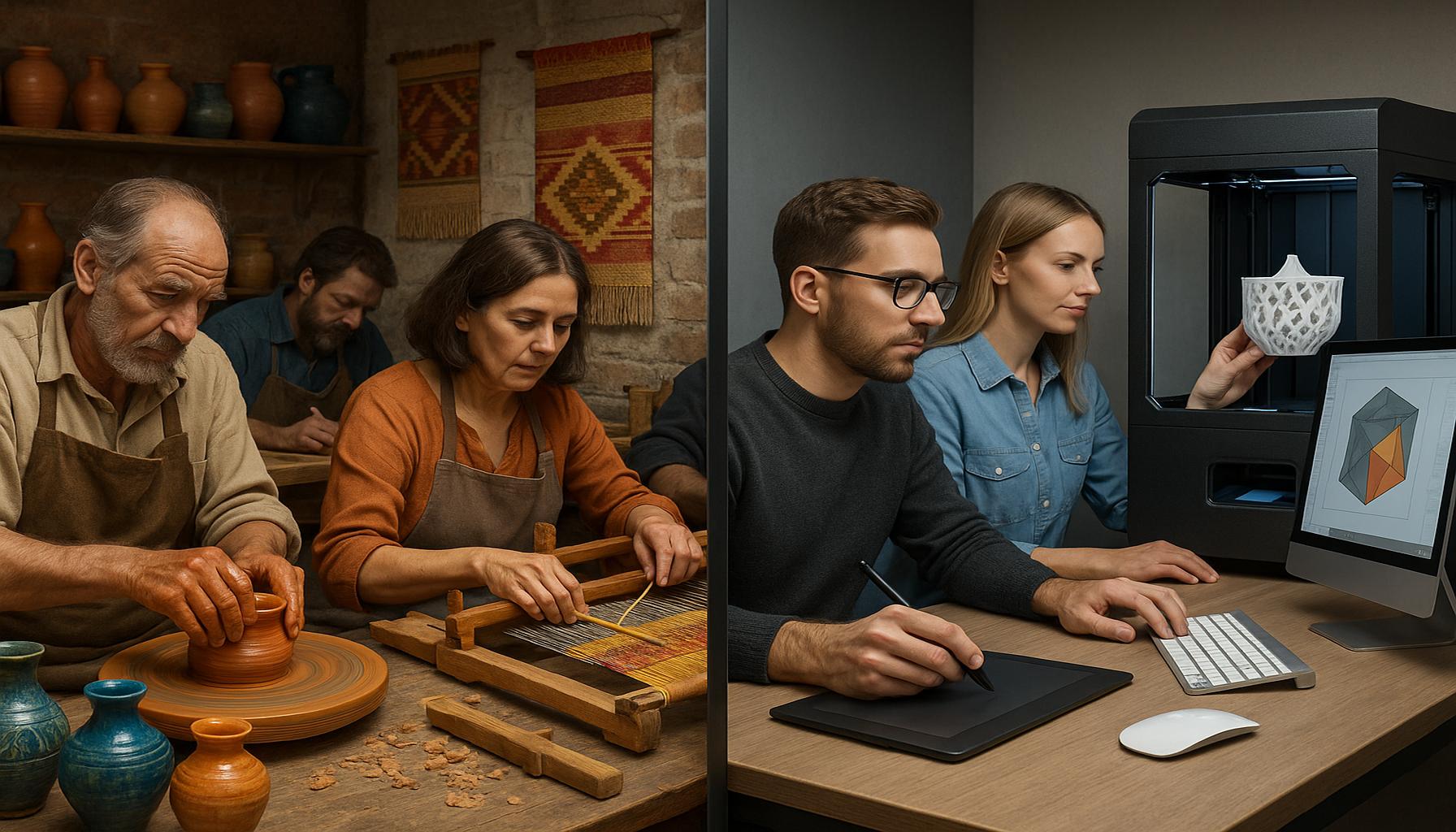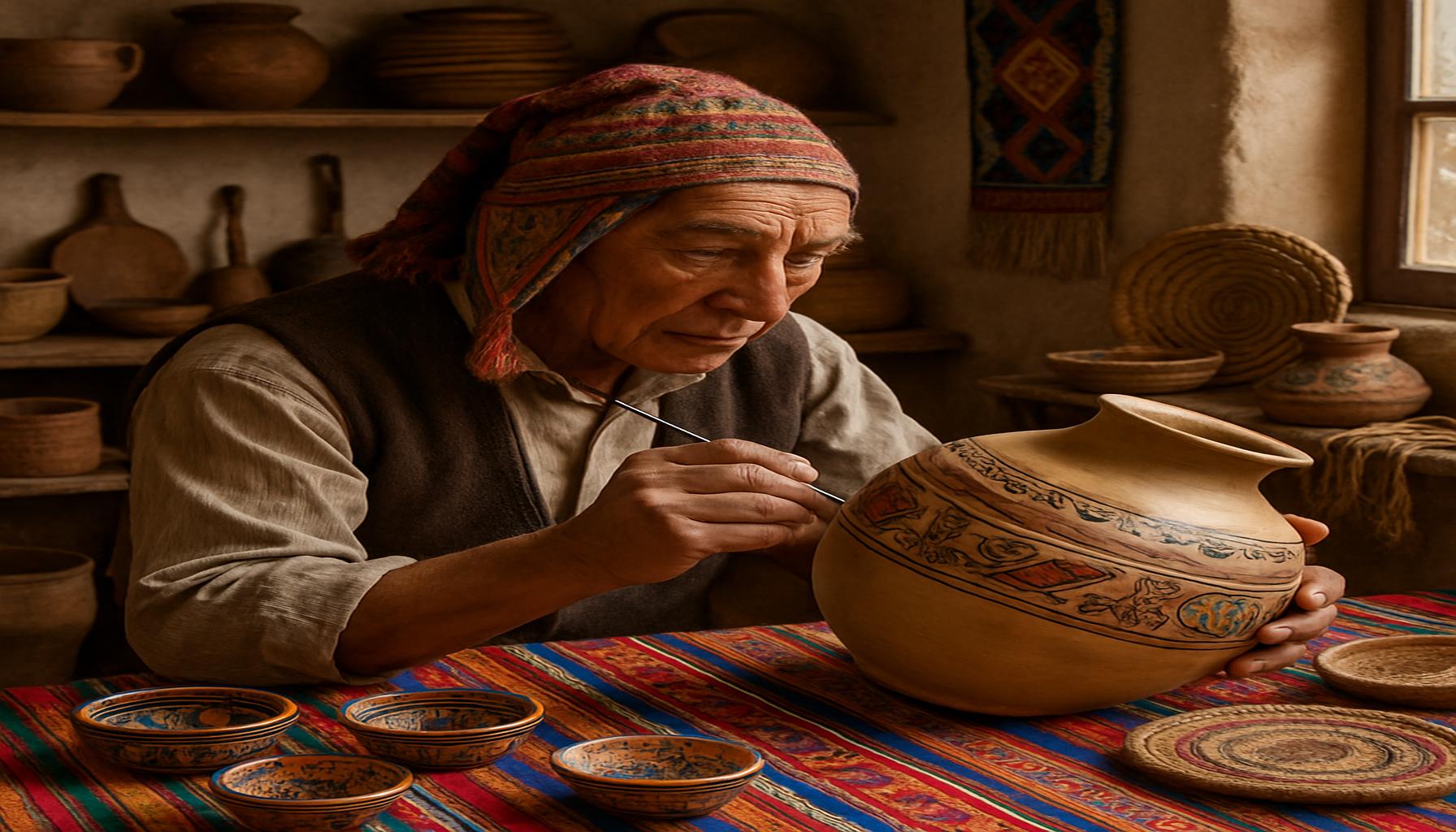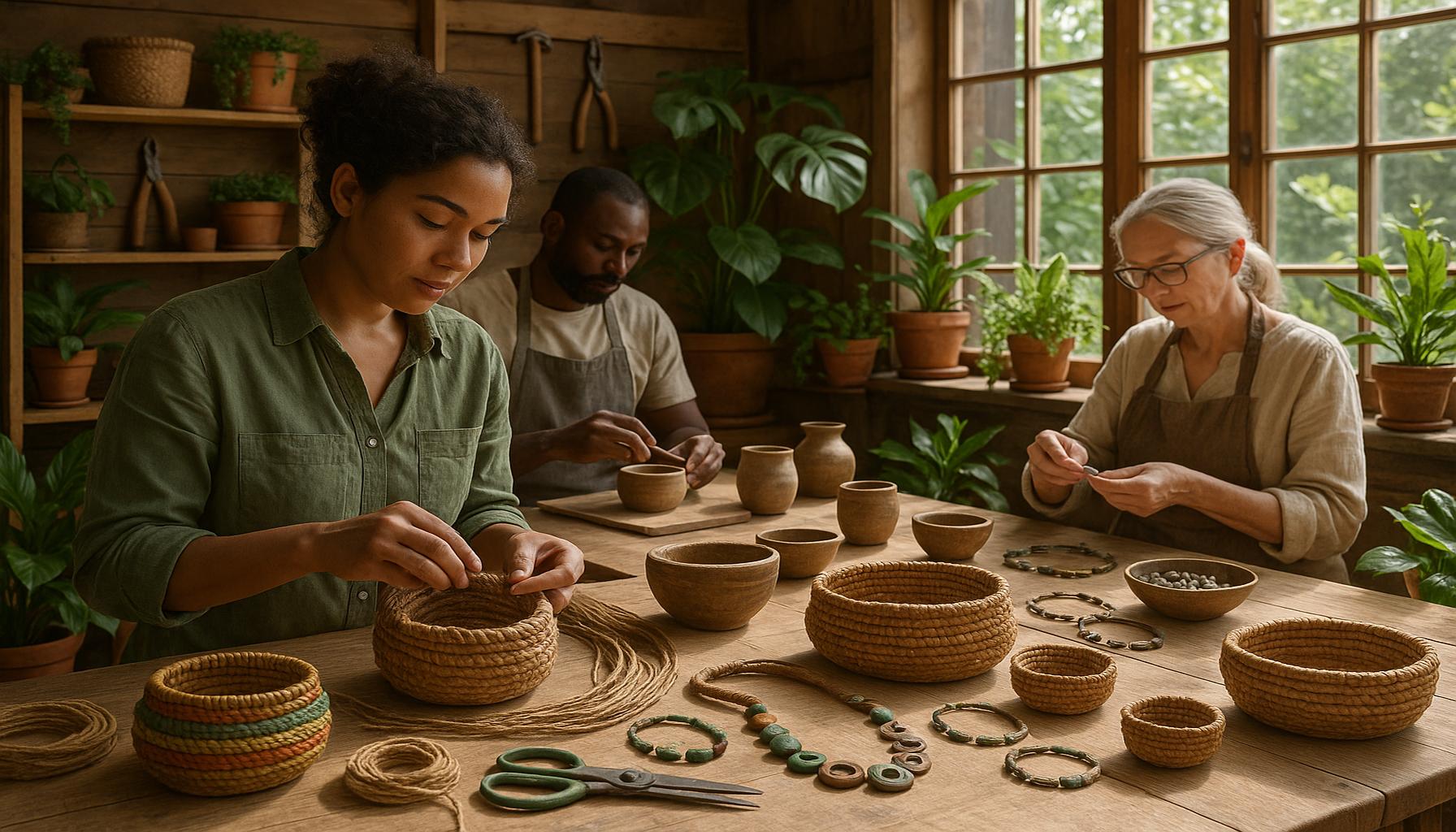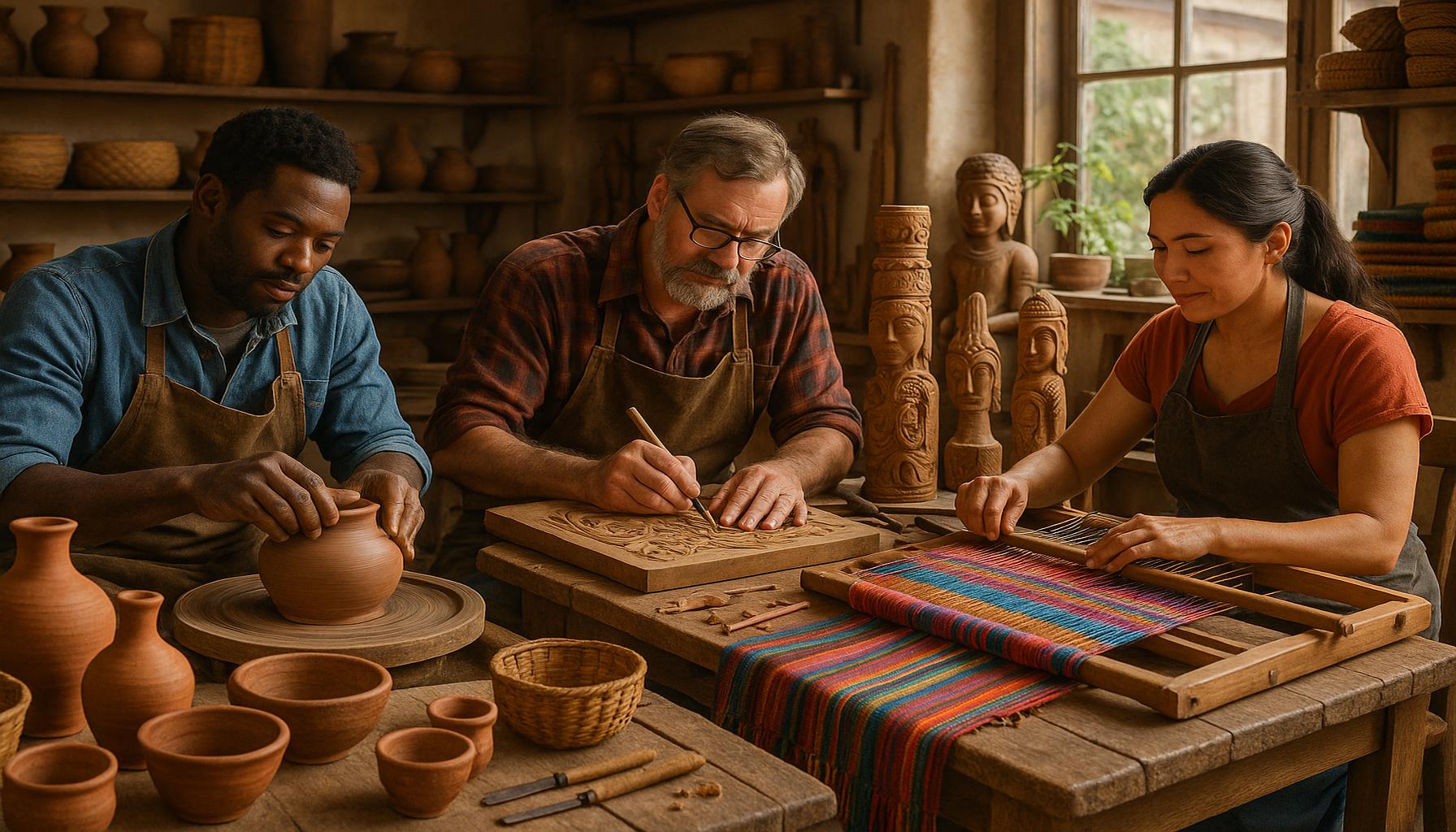The evolution of craftsmanship: How manual traditions are shaping modern creativity

The Resurgence of Traditional Craftsmanship
In an era where technology pervades every aspect of our lives, the revival of traditional craftsmanship is both striking and heartening. This movement is not driven solely by nostalgia; it signifies a profound transformation that weaves together ancient skills and contemporary creativity, offering a refreshing perspective in today’s fast-paced world.
As a response to the homogenization often brought about by mass production, artisans are reawakening time-honored techniques, allowing them to flourish in new contexts. Several pivotal aspects highlight this resurgence:
- Preservation of Techniques: Many of the meticulous methods that have been passed down through generations, such as hand-weaving and pottery, are being reinterpreted in today’s artistic landscape. Artisans often engage deeply with their materials, employing centuries-old practices to create pieces that are not only functional but also imbued with personal history and cultural significance.
- Innovation Through Old Styles: Contemporary artists are not just replicating past techniques; they are merging traditional craftsmanship with forward-thinking designs. For example, some pottery artists incorporate modern glazes that offer unexpected color palettes while still using ancient throwing techniques, creating a dynamic dialogue between the past and present.
- Community Engagement: Local workshops and makerspaces have emerged as hubs for enthusiasts eager to learn and practice these skills. Known for their collaborative spirit, these spaces allow individuals to come together, fostering a sense of community and shared purpose. Initiatives often include classes in woodworking, textiles, and ceramics, promoting an appreciation for craftsmanship.
Furthermore, craftsmanship extends beyond mere production; it cultivates a deeper bond between the creator and the creation. For instance, in the craft brewing scene across the United States, local breweries emphasize traditional brewing techniques while experimenting with unique ingredients, such as local fruits and spices. This innovative approach pays homage to historical methods while catering to modern tastes.
Similarly, furniture-makers are increasingly adopting sustainable materials and employing time-tested techniques. By crafting bespoke pieces, they offer consumers an opportunity to invest in durable products that also reflect personal style and environmental consciousness. It is a movement that values quality over quantity, resonating with an audience that seeks authenticity.
As we delve deeper into this vibrant evolution, it is crucial to consider the broader implications of craftsmanship’s revival. This intersection of manual traditions with modern values has far-reaching effects on sustainability, culture, and innovation within today’s creative landscape. By supporting artisans who uphold these traditions, we contribute to a richer and more diverse future, one where creativity and heritage coexist harmoniously.
DISCOVER MORE: Click here to unlock the therapeutic benefits of writing
Reviving Heritage Through Craft
The renaissance of craftsmanship is not merely a trend; it is an acknowledgement of the unique narratives embedded in hand-made objects. Artisans across the United States are rediscovering the value of manual work, blending it with modern aesthetics to create pieces that are both functional and rich with a story. This revival highlights several key trends that signify how these age-old practices are influencing contemporary creativity:
- Mindful Production: In a world dominated by disposable goods, artisans are steering attention back to the process of creation. Each handmade item evokes a sense of mindfulness, as makers invest their time, energy, and skill into their work. This approach fosters a greater appreciation among consumers for products that have been thoughtfully created rather than mass-produced on assembly lines.
- Cultural Revitalization: Craftsmanship serves as a bridge to cultural heritage, preserving traditions that may have otherwise faded into obscurity. For instance, Native American artisans have been instrumental in keeping tribal methods alive through intricate beadwork and pottery. This not only strengthens cultural identities but also invites a broader audience to acknowledge and celebrate diverse craftsmanship.
- Cross-disciplinary Collaboration: Craftsmanship is increasingly collaborating with various creative fields such as fashion, technology, and design. Artists are forming partnerships that challenge conventional boundaries. For example, certain fashion designers are incorporating 3D-printed elements into traditional garments, merging the precision of technology with the authenticity of handcrafted materials. This type of innovative interplay is expanding the definition of what craftsmanship can be.
- Sustainability Focus: The modern consumer is more environmentally conscious than ever before, leading artisans to prioritize sustainable practices. Upcycled materials, eco-friendly dyes, and ethical sourcing have become standard arguments for many artisans as they create meaningful products. The emphasis on sustainability resonates with buyers who value not just the product, but the positive impact behind it.
One of the most compelling aspects of this evolution is the story behind each crafted item. Take the rise of local food artisans, where farm-to-table movements are allowing chefs and producers to showcase traditional cooking methods. They are breathing life into old recipes while emphasizing local ingredients, such as heirloom grains and heritage vegetables. This modern twist not only supports local economies, but also nurtures a growing appreciation for craftsmanship in the culinary world.
This resurgence is also accompanied by a shift in consumer values, as individuals increasingly seek authenticity over anonymity. The desire to connect personally with creators fosters loyalty towards local businesses. Artisans, in turn, are embracing social media platforms to share their stories and processes, enabling consumers to become part of their journey. This new transparency not only builds a more profound connection to products but also humanizes the act of consumption.
As we explore how traditional craftsmanship shapes modern creativity, it becomes evident that virtues of patience, skill, and storytelling are taking center stage. Artisans are not simply preserving the past; they are forging new paths that honor their roots while nurturing innovation. The resulting synergy between historical methods and contemporary artistry invites all of us to rethink our relationship with the things we create and consume.
Craftsmanship has witnessed a remarkable resurgence in recent years, intertwining traditional methods with contemporary creativity. This evolution emphasizes not only the age-old skills but also the modern innovations that breathe new life into these manual practices. As artisanal techniques gain popularity, they are influencing various fields, including fashion, design, and even technology.One of the most striking examples is the impact of handcrafted goods on consumer preferences. Today’s consumers are increasingly drawn to unique, bespoke items that tell a story. This shift has led to an embrace of local artisans and a demand for handcrafted products, which raises awareness about sustainable practices and ethical production. In this way, craftsmanship fosters strong community ties and supports local economies.Moreover, educational institutions are beginning to recognize the value of integrating manual traditions into curricula, bridging the gap between history and modern applications. Workshops that focus on traditional skills such as woodworking, pottery, and textile arts are enabling a new generation of creatives to gain hands-on experience and connect with their heritage. The blending of these techniques with innovative thinking not only preserves tradition but also enhances artistic expression.This intertwining of past and present is reflected in numerous industries. For instance, fashion designers are increasingly collaborating with artisans to create collections that blend couture with craftsmanship. This not only elevates the aesthetic appeal but also showcases the value of skilled artisans and promotes a greater appreciation for the craft.As we delve further into the implications and advantages of this evolution of craftsmanship, it becomes clear that manual traditions are not mere relics of the past but rather dynamic influences shaping modern creativity. This ongoing dialogue between old and new enables artists and creators to develop unique, meaningful works that resonate with audiences today.
DISCOVER MORE: Click here to dive deeper into painting techniques
The Intersection of Technology and Tradition
As we delve deeper into the evolution of craftsmanship, it’s essential to examine how technological advancements are reshaping traditional handmade practices. The advent of technology is not seen as a competition to craftsmanship but rather as a medium that enhances creativity and expands possibilities for artisans. This synergy is manifested in several key areas:
- Digital Design Tools: Programs like Adobe Creative Suite and intricate CAD software have allowed artisans to visualize their ideas more precisely before the first physical element is created. This transition from pure hand-drawing to digital sketches permits artisans greater flexibility and experimentation. Craftspeople can continually refine their designs, thereby merging artisanal techniques with contemporary design principles.
- Online Marketplaces: Platforms like Etsy, Big Cartel, and ArtFire have transformed how artisans reach customers. With a global audience at their fingertips, makers can sell their unique, handcrafted goods directly without the need for a middleman. This democratization of commerce not only assists in sustaining small businesses but also cultivates a vibrant community that values individuality and craftsmanship.
- 3D Printing and Craft: While the idea of 3D printing may seem at odds with traditional methods, many artisans are embracing this technology. Crafting unique and complex components that were once impossible to create by hand has opened new avenues for items that retain a handcrafted feel. For example, ceramicists are incorporating 3D-printed molds into traditional pottery, allowing for exquisite and innovative designs that blend the old with the new.
- Social Media Influence: The rise of platforms like Instagram and TikTok enables artisans to showcase their work to a broad audience, garnering attention that was previously hard to achieve. Tutorials, behind-the-scenes processes, and customer interactions create a dynamic narrative around craftsmanship, enhancing consumer engagement. This visibility not only supports brand building but also generates a shared enthusiasm for craft, inspiring others to explore their creative capabilities.
Additionally, working artisans today are increasingly focusing on storytelling as a critical component of their brand identity. Each handmade piece is imbued with personal narratives that resonate with consumers. Through blogging and social media content, artisans can articulate the inspiration behind their creations, whether it’s a family heirloom, a regional technique, or a social cause. This practice of weaving personal stories into the fabric of the items further amplifies the value of handcrafted goods.
The impact of craftsmanship is also notable in education, with a growing number of programs dedicated to reviving traditional skills. Institutions are re-establishing courses in woodworking, textiles, jewelry-making, and other arts that have historical significance in the U.S. These programs not only recycle knowledge but also empower the next generation to appreciate the patience and skill required to create by hand.
Furthermore, the notion of “slow craft” is gaining traction as a counter-movement to today’s fast-paced consumer culture. This ideology prioritizes quality over quantity, focusing on the meticulous process of creation. As a result, consumers are beginning to consider the value of artisanship as synonymous with time, care, and effort—qualities that are increasingly rare in an age of automation.
In summary, the confluence of craft and technology is fostering a rich landscape for modern creativity. As artisans leverage digital tools, explore innovative materials, and share their narratives, they’re redefining the essence of what craftsmanship can mean today, paving the way for future generations to explore this age-old practice in new and exciting ways.
DIVE DEEPER: Click here to discover artistic techniques for self-expression
Conclusion: Craftsmanship in a Modern World
In conclusion, the evolution of craftsmanship represents a significant narrative in the broader context of creativity. As artisans skillfully navigate the intersection of tradition and technology, they breathe new life into age-old practices while cultivating an environment ripe for innovation. The adoption of digital design tools, the rise of online marketplaces, and the incorporation of technologies like 3D printing have not only expanded the capabilities of craftspeople but have also enhanced the visibility and accessibility of their work. This shift allows for a more diverse range of artistic expression that resonates deeply with both creators and consumers.
Furthermore, the growing emphasis on storytelling and the principles of slow craft underscores a significant cultural shift towards valuing quality over quantity. In an age where mass production often overshadows the artistry of creation, the stories that underpin handcrafted items add layers of meaning and connection. As we witness more educational programs revive traditional skills, it becomes evident that the future of craftsmanship is not merely about preservation but rather about adaptation and reinvention.
As we move forward, the dialogue between traditional artisanship and contemporary techniques fosters a vibrant creative community that challenges conventional notions of art and craftsmanship. This dynamic interplay encourages individuals to explore their own creative journeys while appreciating the significance of the manual traditions that lay the foundation for modern creativity. Ultimately, as craftsmanship continues to evolve, we are reminded of its enduring value—a celebration of human ingenuity, patience, and a profound connection to the past, present, and future.


